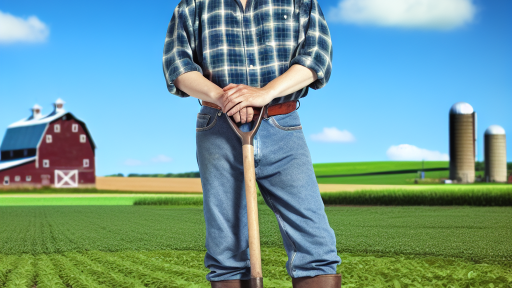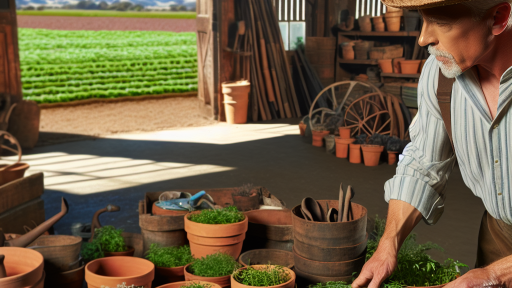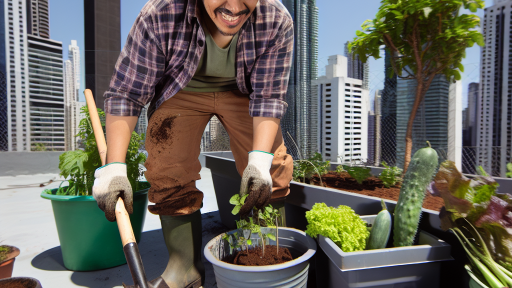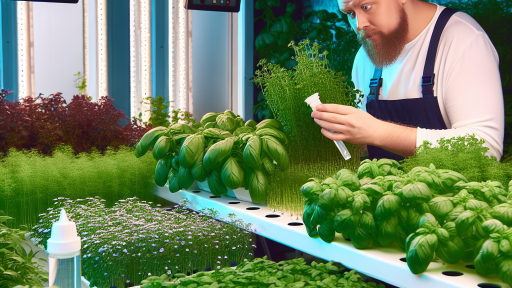Introduction to Mushroom Cultivation
Benefits of Mushroom Cultivation
Mushroom cultivation offers numerous benefits for farmers.
It provides a sustainable income source with high market demand.
Mushrooms require less space compared to traditional crops.
Additionally, they can be grown in various substrates.
This practice also contributes to waste reduction.
Farmers can utilize agricultural by-products in the process.
Moreover, mushroom farming has a low environmental impact.
It helps improve soil health through mushroom residue.
Overview of Mushroom Cultivation
Mushroom cultivation involves specific techniques and conditions.
Different species require varying growing environments.
Knowledge of these needs is crucial for successful farming.
The process generally starts with selecting the right mushroom type.
Common species include oyster, shiitake, and button mushrooms.
Once chosen, farmers prepare appropriate substrates for growth.
Next, inoculation with mushroom spores occurs in a controlled setting.
Transform Your Agribusiness
Unlock your farm's potential with expert advice tailored to your needs. Get actionable steps that drive real results.
Get StartedAfterward, farmers monitor temperature and humidity levels diligently.
This ensures optimal growth and higher yields.
Finally, when mature, mushrooms are harvested and marketed.
Understanding the entire lifecycle is essential for profitability.
Choosing the Right Mushroom Species for Your Farm
Understanding Different Mushroom Types
Mushrooms fall into various categories based on their growth patterns and flavors.
Edible mushrooms like shiitake and oyster are popular for cultivation.
Some mushrooms also have medicinal properties, such as reishi and lion’s mane.
Identifying the type that suits your farm’s conditions is crucial.
Assessing Market Demand
Market demand greatly influences your choice of mushroom species.
Research local preferences for specific mushroom varieties.
Consider attending farmers’ markets to gauge consumer interest.
Understanding trends helps ensure profitability for your farm.
Evaluating Growing Conditions
Different mushroom species require unique growing environments.
Shiitake mushrooms flourish on hardwood logs or sawdust.
Conversely, oyster mushrooms thrive in straw or coffee grounds.
Assess available resources and climate before making a decision.
Considering Your Experience Level
Your experience with mushroom cultivation can affect your choice.
Beginner farmers may prefer easy-to-grow species like button mushrooms.
More experienced cultivators might explore exotic varieties like enoki.
Choose mushrooms that match your skills for successful farming.
Reviewing Economic Factors
Economic viability plays a significant role in your decision.
Consider production costs, potential yield, and selling price.
Conduct a cost-benefit analysis before committing to a species.
Focus on mushrooms with high market value to boost profits.
Showcase Your Farming Business
Publish your professional farming services profile on our blog for a one-time fee of $200 and reach a dedicated audience of farmers and agribusiness owners.
Publish Your ProfileNetworking and Learning from Others
Connecting with other mushroom farmers can offer valuable insights.
Join local farming groups or online forums to expand your knowledge.
Sharing experiences can lead to discovering successful techniques.
Leverage these relationships to avoid common mistakes in cultivation.
Preparing the Substrate
Understanding Substrate’s Role
The substrate is crucial for mushroom growth.
It provides nutrients and stability to the growing mycelium.
Choosing the right substrate enhances yield and quality.
Common Substrate Materials
Various materials are used for mushroom substrates.
Some popular options include straw, sawdust, and compost.
Each material has its unique properties.
S straw
S straw is lightweight and easy to handle.
It provides excellent aeration and moisture retention.
Use wheat or barley straw for best results.
Sawdust
Sawdust serves as an excellent substrate for many mushrooms.
It retains moisture well and degrades slowly.
Hardwoods like oak or maple work best.
Compost
Compost is highly nutritious for mushrooms.
It can be made from various organic materials.
Ensure it is well-aged to prevent contamination.
Methods for Preparing Substrate
Preparation methods significantly affect substrate quality.
Common methods include pasteurization and sterilization.
Pasteurization
Pasteurization eliminates competing microorganisms.
Heat substrate to a temperature of 160°F to 180°F.
This method is less intensive than sterilization.
Sterilization
Sterilization destroys all forms of life in the substrate.
Use an autoclave for effective sterilization.
Maintain a temperature of 250°F for about 30 minutes.
Inoculation Techniques
Inoculation introduces mushroom spores or mycelium into the substrate.
Use a sterile environment to prevent contamination.
Common techniques include using grain spawn or liquid culture.
Grain Spawn
Grain spawn is a popular choice for inoculation.
It contains mycelium growing on sterile grains.
Mix the grain spawn thoroughly with the substrate.
Liquid Culture
Liquid culture provides a more rapid inoculation method.
It uses a nutrient-rich liquid medium for mycelium growth.
Inject the liquid culture into the substrate using sterile techniques.
Moisture Management
Monitoring moisture levels is essential for successful cultivation.
Too much moisture can cause fungal contamination.
Too little moisture will hinder mycelium growth.
Assessing Moisture Levels
Strive for a moisture content of around 60-70%.
Showcase Your Farming Business
Publish your professional farming services profile on our blog for a one-time fee of $200 and reach a dedicated audience of farmers and agribusiness owners.
Publish Your ProfileWet the substrate until it feels damp but not soggy.
Use a moisture meter for accurate readings.
Maintaining Humidity
Maintain high humidity in the growing environment.
Use misting systems to regulate moisture levels.
Cover the substrate with plastic or a humidity tent during colonization.
Delve into the Subject: Seasonal Tips for Year-Round Mushroom Cultivation
Inoculation Process
Preparing the Substrate
Start by selecting a high-quality substrate for mushroom cultivation.
Common options include straw, sawdust, and composted materials.
Ensure the substrate is clean and free from contaminants.
Moisten the substrate to reach the optimal moisture content.
Sterilizing the Substrate
Next, sterilize the substrate to eliminate harmful microorganisms.
Use a pressure cooker or autoclave for effective sterilization.
Maintain the temperature at 121°C for approximately one hour.
Allow the substrate to cool in a clean environment to prevent contamination.
Choosing the Mycelium
Select a suitable mycelium strain that matches your substrate.
Consider local climate and growing conditions when choosing the strain.
Purchase the mycelium from a reputable supplier for quality assurance.
Inoculating the Substrate
Once the substrate has cooled, prepare for inoculation.
Use sterile gloves and tools to avoid contamination.
Crumble the mycelium into small pieces before adding it to the substrate.
Mix the mycelium thoroughly with the substrate for even distribution.
Sealing and Labeling
Seal the inoculated substrate in a clean container or bag.
Label the containers with the strain name and inoculation date.
Maintain a consistent temperature for the mycelium to colonize.
Monitoring the Growth
Regularly check the substrate for signs of mycelium growth.
Look for a white, fluffy appearance indicating successful colonization.
Keep the environment humid but well-ventilated during this phase.
Transferring to Fruiting Conditions
Once the substrate is fully colonized, transfer it to fruiting conditions.
Adjust the temperature and humidity levels for optimal fruiting.
Expose the substrate to light to encourage mushroom development.
Learn More: Growing Vegetables In Urban Environments
Environmental Conditions: Controlling Temperature, Humidity, and Light
Understanding Optimal Conditions
Optimal environmental conditions are crucial for successful mushroom cultivation.
Mushrooms thrive in specific temperature ranges depending on their species.
Most varieties prefer temperatures between 60°F and 75°F.
Maintaining consistent temperatures prevents stress on mushroom growth.
Additionally, humidity levels significantly affect mushroom quality.
Mushrooms generally require high humidity, around 85% to 90%.
Low humidity can lead to poor growth and drying out of mushrooms.
Controlling Temperature
To control temperature effectively, use thermostats in your growing area.
Heating systems can help maintain warmth during cooler months.
Showcase Your Farming Business
Publish your professional farming services profile on our blog for a one-time fee of $200 and reach a dedicated audience of farmers and agribusiness owners.
Publish Your ProfileCooling systems are necessary during hotter weather to prevent overheating.
Using fans can aid in air circulation, ensuring even temperature distribution.
Regularly monitor temperatures using a reliable thermometer.
Adjust your systems based on the specific needs of the mushroom species.
Managing Humidity
High humidity levels are essential for mushroom development.
Humidifiers are effective tools for maintaining these conditions.
Alternatively, misting systems can provide necessary moisture to the air.
Ensure proper drainage to prevent excessive water buildup.
Regularly check humidity using a hygrometer for accurate readings.
Adjust your methods based on the life stage of the mushrooms.
Providing Adequate Light
Light plays a vital role in the growth cycle of mushrooms.
While mushrooms do not require direct sunlight, some light is beneficial.
Use LED or fluorescent lights to mimic daylight conditions.
12 hours of light and 12 hours of darkness is a common cycle.
Excessive light can harm some mushroom species, so monitor exposure.
Understanding your specific mushroom type helps tailor light conditions.
Uncover the Details: Benefits of Organic Farming for the Environment
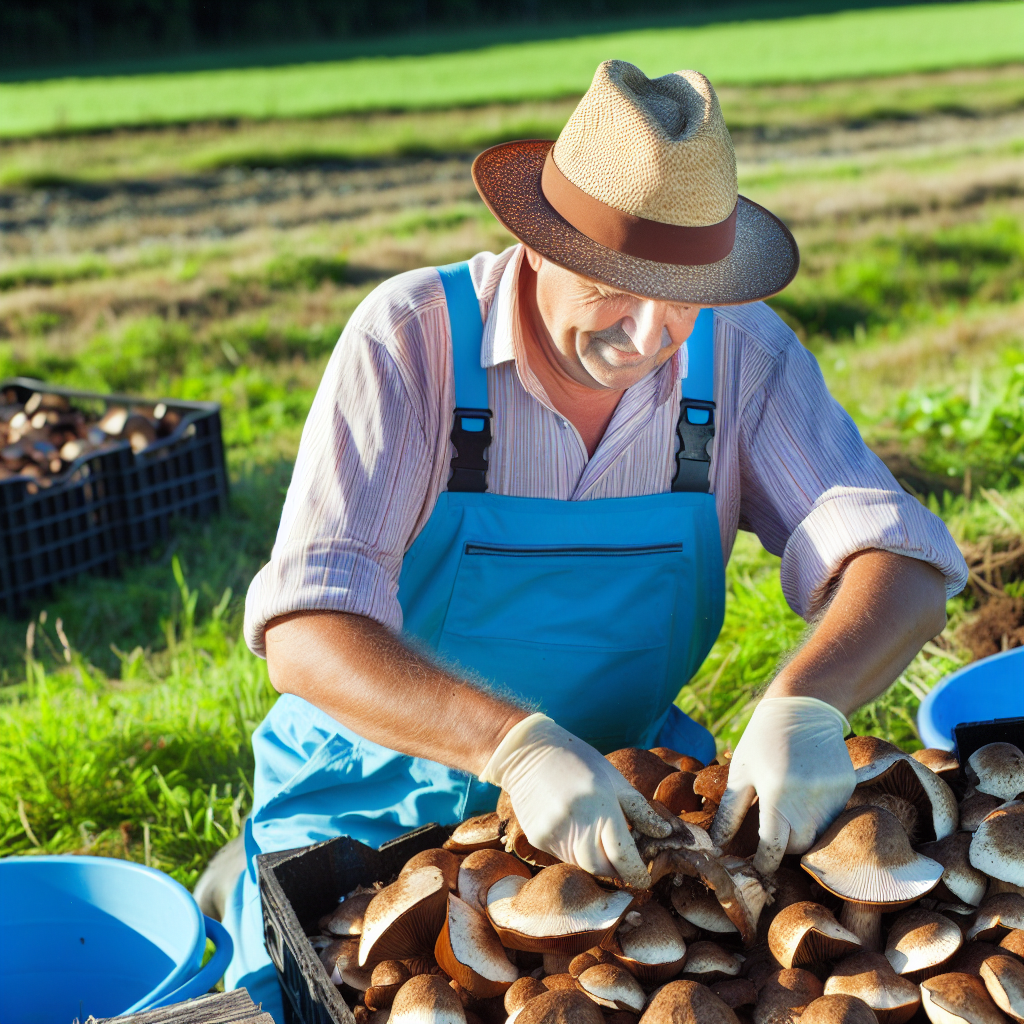
Monitoring Growth
Importance of Regular Monitoring
Regular monitoring ensures healthy mushroom growth.
It helps identify potential issues early on.
This proactive approach saves time and resources.
Signs of Healthy Mushrooms
Healthy mushrooms exhibit a robust growth pattern.
Look for uniform coloration and texture.
Additionally, proper size indicates good health.
Common Issues and Solutions
Pests and Diseases
Pests can harm your mushroom crop significantly.
Regular inspections help catch infestations early.
Use organic pest control methods for safety.
Environmental Stress
Environmental factors greatly affect mushroom growth.
Temperature fluctuations can lead to stunted growth.
Maintain a stable temperature and humidity level.
Nutrient Deficiencies
Mushrooms require specific nutrients for optimal growth.
Deficiencies can result in poor yields.
Regular soil tests help identify nutrient levels.
Utilizing Technology
Technology can enhance monitoring efforts.
Consider using sensors for real-time data.
This approach allows for precise adjustments.
Seeking Professional Help
Sometimes, expert guidance is necessary.
Consult with mycologists for tailored advice.
They can help troubleshoot complex problems.
See Related Content: Perennial Vegetables for Edible Landscapes
Harvesting Techniques
Understanding When to Harvest
Timing is crucial for harvesting mushrooms successfully.
Showcase Your Farming Business
Publish your professional farming services profile on our blog for a one-time fee of $200 and reach a dedicated audience of farmers and agribusiness owners.
Publish Your ProfileYou should monitor the growth closely.
Harvest your mushrooms when the caps begin to open.
Different species have specific harvest indicators.
For example, Shiitake mushrooms should be harvested when caps are fully expanded.
Conversely, Oyster mushrooms are best when their caps are still curled.
Pay attention to these details for optimal flavor.
Identifying the Right Techniques
Use clean and sharp tools for harvesting.
A sharp knife or scissors works well for this task.
Cut the stem at the base with precision.
Avoid twisting or pulling to prevent damage to the mycelium.
This technique encourages future growth in the same spot.
Post-Harvest Handling
Immediately place harvested mushrooms in a breathable container.
A basket lined with paper towels is a good option.
Avoid plastic bags; they can cause moisture buildup.
Keep harvested mushrooms in a cool, shady area.
Refrigerate them if you plan to store them for longer periods.
Recognizing Quality Indicators
Fresh mushrooms should appear firm and plump.
Avoid those that seem slimy or shriveled.
Smell is also an essential factor; fresh mushrooms have a pleasant earthy aroma.
Ensuring quality at harvest maximizes market value.
Post-Harvest Handling: Storage, Packaging, and Marketing Strategies
Importance of Post-Harvest Handling
Effective post-harvest handling ensures high-quality mushrooms reach consumers.
This process reduces spoilage and retains freshness during storage.
Farmers must implement best practices to maximize profits.
Storage Conditions
Store mushrooms in a cool and dark environment to maintain quality.
Ideal temperatures range from 34°F to 38°F (1°C to 3°C).
Humidity levels should remain between 85% and 90% for optimal results.
Proper ventilation prevents moisture buildup and ensures freshness.
Regularly monitor stored mushrooms to identify signs of spoilage.
Packaging Techniques
Use breathable packaging materials, such as cardboard or paper bags.
Avoid plastic wraps, as they trap moisture and promote decay.
Ensure packaging allows airflow while protecting mushrooms from damage.
Label packages clearly with essential information for consumers.
Include details such as the product name, weight, and harvest date.
Marketing Strategies
Develop a strong branding strategy that resonates with consumers.
Highlight unique qualities of your mushrooms, such as organic or specialty varieties.
Utilize social media platforms to engage potential customers.
Offer educational content to inspire interest in mushroom varieties.
Participate in local farmers’ markets to build community relationships.
Distribution Channels
Identify the most effective distribution channels for your products.
Consider partnerships with local grocery stores and restaurants.
Showcase Your Farming Business
Publish your professional farming services profile on our blog for a one-time fee of $200 and reach a dedicated audience of farmers and agribusiness owners.
Publish Your ProfileExplore online sales to reach a broader audience.
Prioritize fresh delivery options to enhance customer satisfaction.
Engaging with Customers
Foster customer relations through feedback and communication.
Encourage online reviews to boost credibility and visibility.
Implement loyalty programs to incentivize repeat purchases.
Share recipes and cooking tips to inspire culinary creativity.
Additional Resources
How to grow mushrooms at home – Full process day 1 to 60 – YouTube

